There were three series of high-speed, lightweight interurban cars built during the Depression era. There were 20 “Red Devils” built for the Cincinnati and Lake Erie in 1930, one of which raced an airplane in a famous publicity stunt. There were 15 of the famous “Bullet” cars (10 double-ended for the Philadelphia and Western) built in 1932-33, 16 if you count a replacement car. (Both were the inspiration of Dr. Thomas Conway, a very forward thinking pioneer in electric transportation who was involved with reviving and modernizing several interurban properties.)
In addition, there were 35 high-speeds built for Indiana Railroad in 1931. Although the largest group in number, this batch had the fewest survivors- in fact, only two cars were saved, #55 and #65. Interestingly, they were built by two different manufacturers, as IR had the order split. American Car and Foundry (ACF) built 14 cars, while Pullman made 21.
Car #55, preserved today as Lehigh Valley Transit #1030, is an ACF product, while #65 is a Pullman. All 35 of the Indiana Railroad high-speeds can be considered improved versions of the C&LE cars. There are various differences despite their obvious similarity. The Red Devils have a squared-off rear end, while the Indiana cars have a curved end. The Indiana cars could be coupled together and operated as a multiple unit, which the C&LE cars could not do. Despite a greater use of aluminum, the IR cars actually weigh two tons more than the Cincinnatis (which, incidentally, were built by Cincinnati Car Company).
Despite their similar origins, the stories of cars #55 and 65 are as different as night and day, and we can be grateful that any of these fine interurbans were saved. Just how fast these cars could go remains a matter of some conjecture, but it seems likely they could do at least 90 mph, in short bursts of speed- perhaps even more.
Interurban service on the once-great Indiana Railroad quit in 1941. As things sputtered to a close, about 25 of the high-speeds sat for months in storage with no buyers. Eventually, they were taken outside, stripped of valuable parts, and scrapped. (Ironically, if they had been kept just a few months longer, their value possibly would have gone up, with the outbreak of war. Chances are there were operators across the country who could have used these cars during WWII.)
After service to Fort Wayne was abandoned in January 1941, a few cars were retained for a curious, and little-known daily round trip between Indianapolis and Seymour. This has been described as a “franchise run,” but the situation was actually more like a sub-lease. This rump interurban service continued until September 1941, when the unthinkable happened, a head-on collision between car #78 and the line car. Service was discontinued immediately, an inglorious end for the IR.
You can read the entire story in CERA B-128, Indiana Railroad- The Magic Interurban, by George K. Bradley, published in 1992.
Car #65 was a lucky survivor of the Seymour operation and was shipped to Iowa in June 1942, where it went into service on the CRANDIC- the Cedar Rapids and Iowa City Railway, where it was renumbered car #120. There it remained until the end of electric interurban service in 1953, whereupon it became the first car purchased by the new Illinois Electric Railway Museum, which originally kept its collection at a foundry in North Chicago. The IERM repainted the car into Indiana Railroad colors and it went back to being #65, which it has remained since.
The collection was moved to Union in the early 1960s and the car is operated occasionally. I most recently rode the car last summer during the annual Trolley Pageant. It is a thrill to experience the car’s quick and nimble speed. In the early days, when there was a lot less track, the museum was almost afraid to operate it, but nowadays there are several miles for the car to run on. The car is fitted with what might be called leather bucket seats and remains one of the jewels of IRM’s vast collection.
What happened to IR #55 is even more interesting. In early 1941, it was sold to Lehigh Valley Transit, which ran a 55-mile interurban route between Philadelphia and Allentown, partly over shared trackage of the P&W’s Norristown High-Speed Line. Configured as a club car, LVT had the car modified to more closely resemble other ex-C&LE speeders they had purchased in 1938-39.
These modifications were carried out in LVT’s own shops but used some Brill styling talent as outside consultants. The P&W (better know today as “Red Arrow”) insisted that an extra door be added to one side of the car for an emergency exit. This was due to one of the Bullet cars having burned up a few years earlier on the Schuylkill River bridge. Such exit doors were never added to the Bullets, however.
LVT renumbered the car #1030 and it was placed into service on August 28, 1941. Employees nicknamed it the “Golden Calf,” since at first the car was brought in for cleanup and inspection after every run. The car ran in service with other ex-C&LE “Red Devils” on the 55-mile route, and both types ran with the Bullets on the 14 miles shared with the P&W.
Ridership on the Liberty Bell Limited greatly increased during WWII, and soon the rigorous inspection schedule went out the window. In 1949, after LVT abandoned its other interurban, the Easton Limited, the easy chairs were removed from #1030 and replaced with leather bucket seats salvaged from some of the Cincinnati curved-side cars used on that route. These were essentially like those in IR #65, and that is how car #1030 finished up its 10 years of LVT service in September 1951, when buses were subbed for railcars. Interestingly, the bus substitution of the Liberty Bell limited was not a success and only lasted another five years.
There were no third-hand takers for the remaining ex-C&LE cars that LVT had, and all were scrapped. Traction motors were sold to the P&W for use on the Bullet cars, which continued to operate into the early 1990s.
Fortunately, LVT #1030 was saved, and was bought by the Seashore Electric Railway Historical Society, Inc., which we know today as the Seashore Trolley Museum, in Kennebunkport ME. The car was moved by rail to Boston, where it was temporarily stored by the MTA before being trucked the rest of the way to Maine.
The leather bucket seats were removed, and were replaced by lounge chairs salvaged from some of the LVT’s ex-C&LE cars. Car #1030 remains at Seashore today, where it is occasionally operated.
There is a final Indiana connection. In his book Interurban Railways of Allen County, Indiana (1958), Roy M. Bates writes:
Mr. Theodore Santarelli De Brasch of Boston, Massachusetts, a great-grandson of Oliver P. Morton, Indiana’s Civil War Governor, was President of the Seashore Electric Railway Museum. Through his efforts #55 was acquired and preserved.
CERA has returned time and again to the LVT story, publishing a roster in B-48, and featuring it on the cover of B-81, one of the “Trolley Sparks” series. There is significant coverage of LVT in B-140 (Pig & Whistle), at least about the shared operations on Norristown, and, most recently, an LVT section in B-142 (Keystone State Traction). I am sure it is a subject we will revisit again in greater detail in our future publications.
Meanwhile, we can all be glad that at least two of the finest lightweight interurban rail cars ever made were saved, to be enjoyed today and in future generations to come.
-David Sadowski
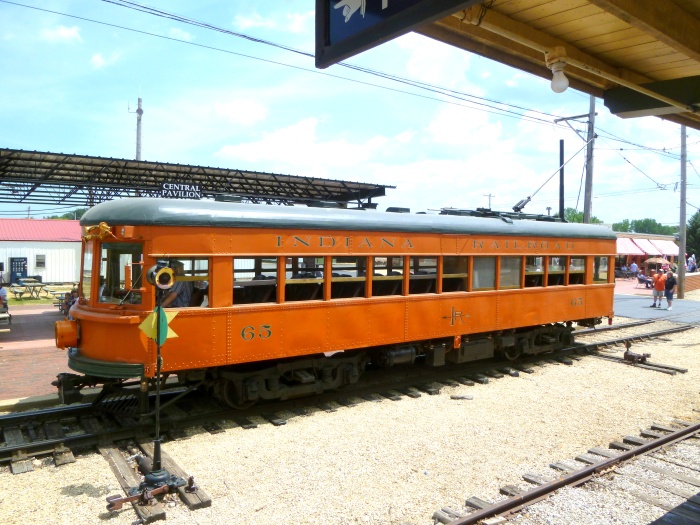
IR #65 in 2012 at the Illinois Railway Museum in Union. (Photo by David Sadowski)

The cover of CERA B-91 shows a three-car MU train of lightweight high-speeds, with car #66 in the lead.
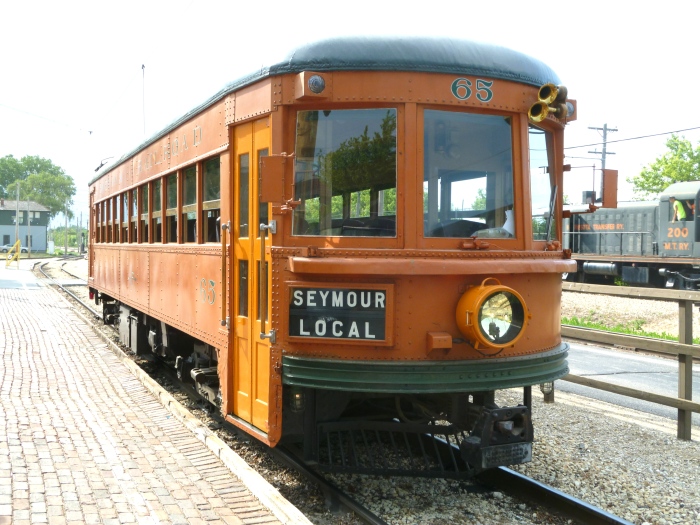
IR #65 in 2012 at the Illinois Railway Museum in Union. (Photo by David Sadowski)
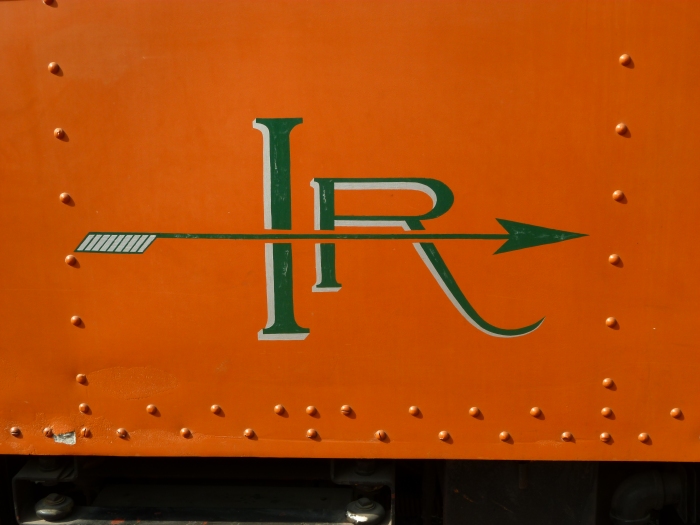
The stylish Indiana Railroad logo. (Photo by David Sadowski)
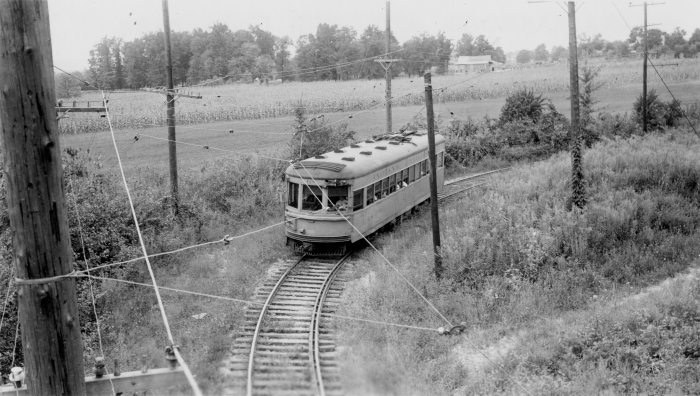
IR #68 in action at the PRR underpass (Author’s collection)

IR #66 on the Fort Wayne local. (Author’s collection)

IR #54 signed for Fort Wayne – Hoosierland. (Author’s collection)
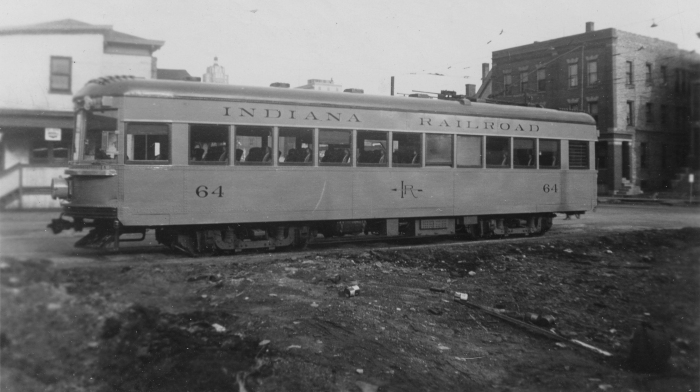
On the back of the photo, it says, “Indiana RR lightweight interurban #64. Snapped in Ft. Wayne, April 1, 1939. Color- orange + green roof. Built 1930 by Am. Car Co., Jeffersonville, Ind.” (Author’s collection)
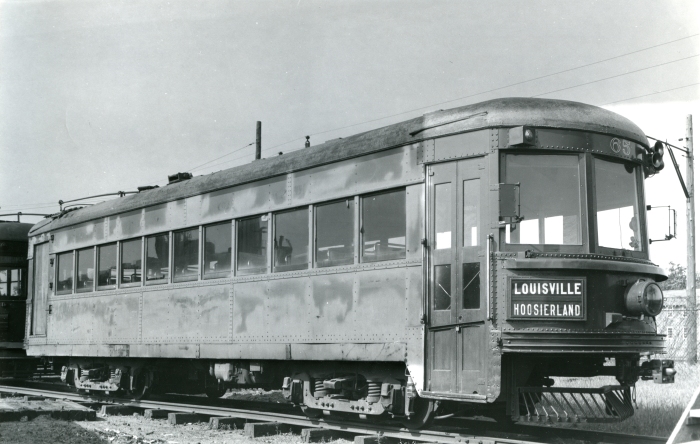
IR #65 on June 2, 1956. The first car purchased for the fledgling Illinois Electric Railway Museum, we see it here in North Chicago, being repainted in IR colors after running on CRANDIC. (Photo by Bob Selle – Author’s collection)
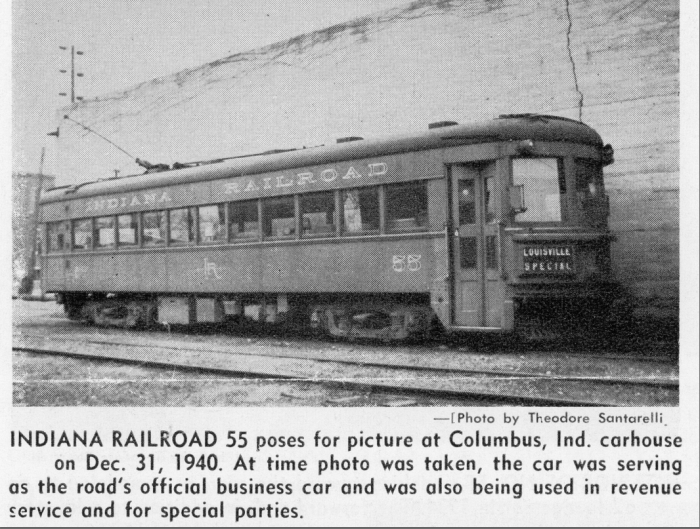
From a 1952 Seashore Electric Railway special report on car #1030 Author’s collection)
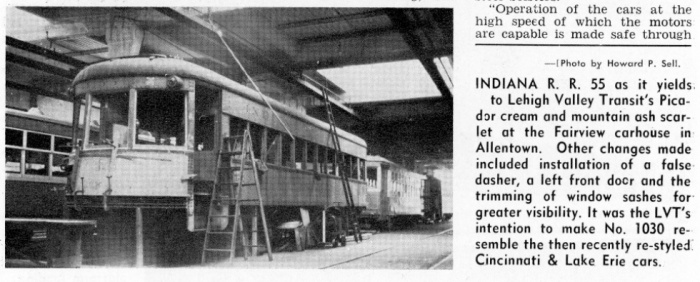
From a 1952 Seashore Electric Railway special report on car #1030 Author’s collection)
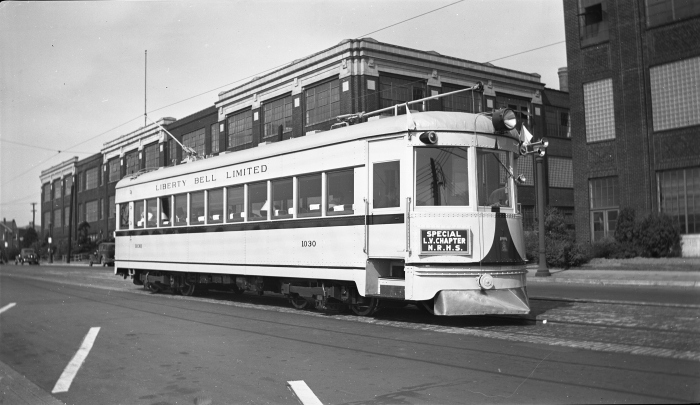
Indiana Railroad #55, reincarnated as Lehigh Valley Transit #1030, seen here in Alletown PA on an August 28, 1941 NRHS fantrip. This was the beginning of the car’s 10-year career here. (Author’s collection)

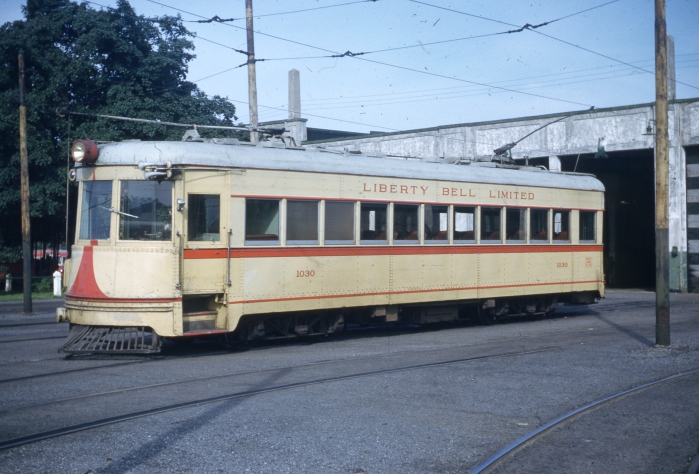
LVT #1030 on September 9, 1951, after interurban service was abandoned. (Author’s collection)
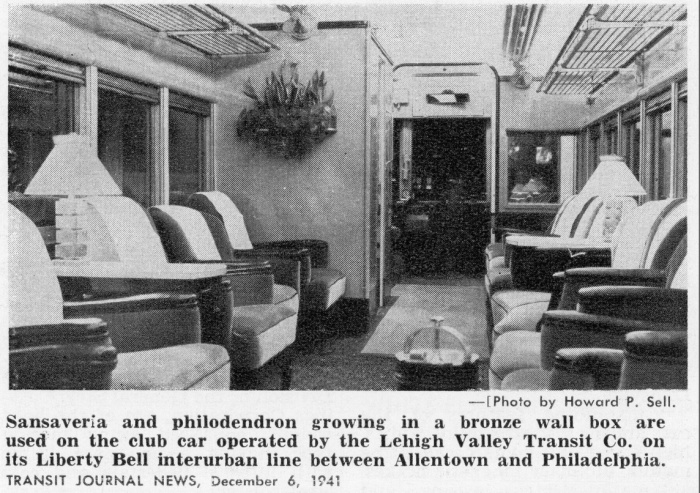
From a 1952 Seashore Electric Railway special report on car #1030 Author’s collection)

From a 1952 Seashore Electric Railway special report on car #1030 Author’s collection)
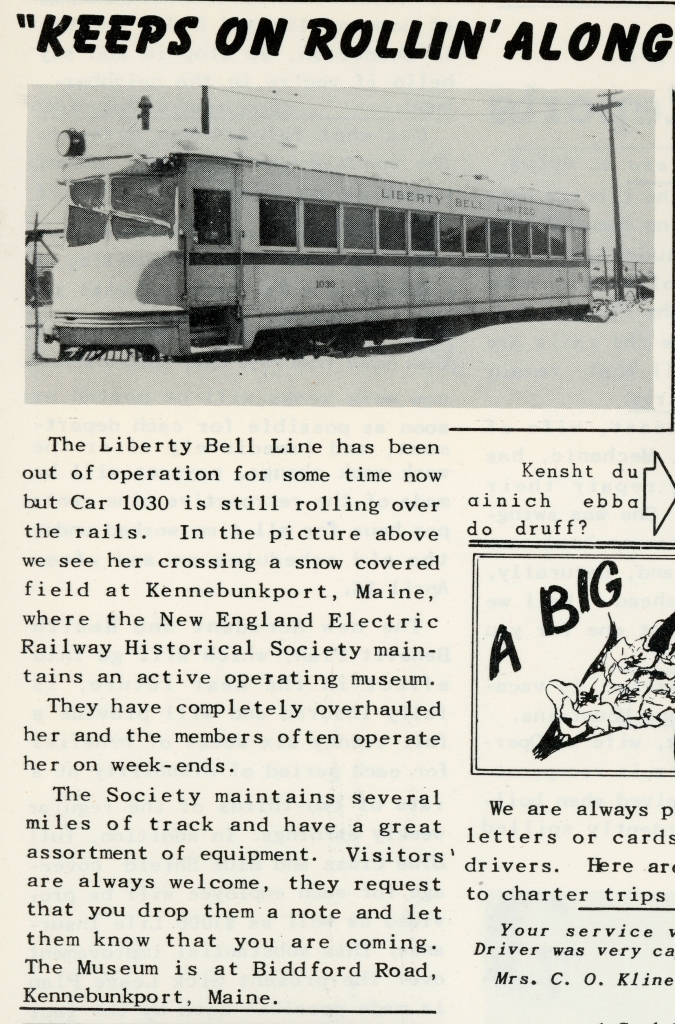
From a 1953 issue of Transit Topics, the LVT employee publication. (Author’s collection)
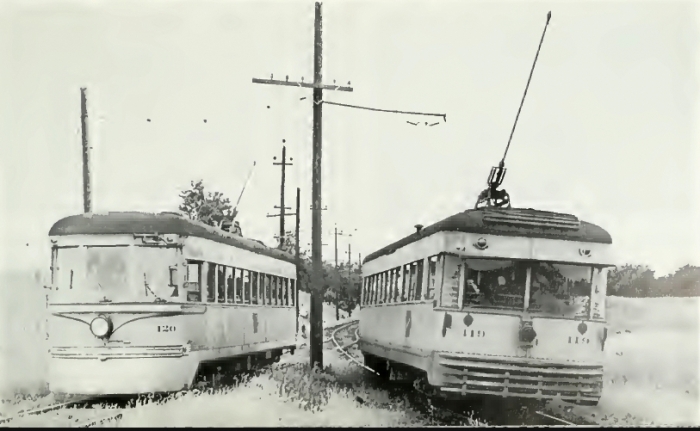
IR #65 at left in CRANDIC service, renumbered as #120, with an ex-CLE high-speed at the right (Author’s collection)
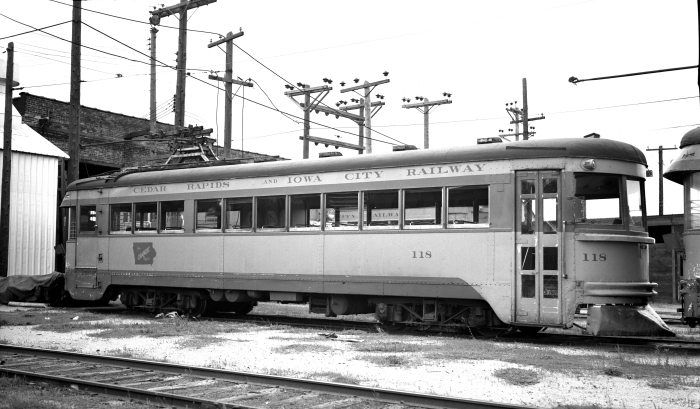
1930 Cincinnati & Lake Erie “Red Devil” #118, shown here in CRANDIC service in Iowa. In 1954, this car was sold to the Seashore Trolley Museum, where it is preserved today. (Author’s collection)

SEPTA ex-P&W “Bullet” car #202 in service on the Norristown High-Speed Line in 1985. (Photo by David Sadowski)